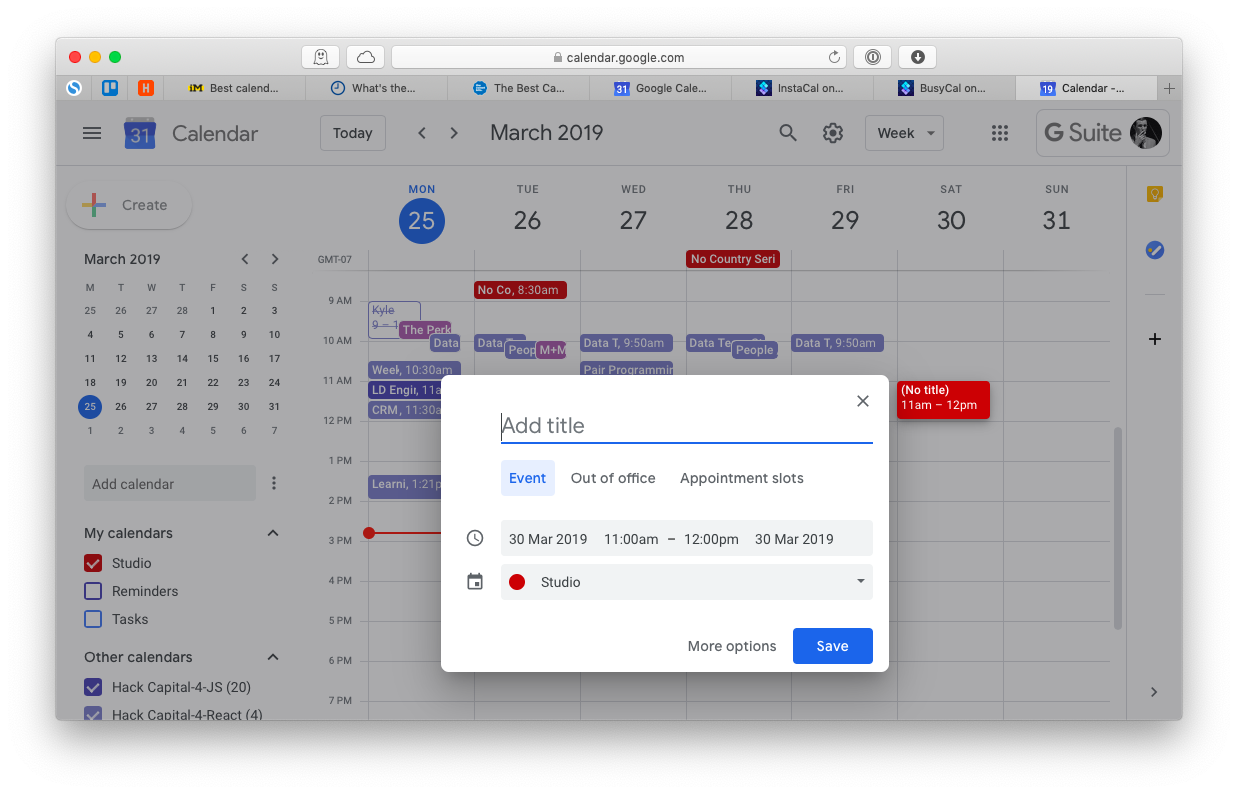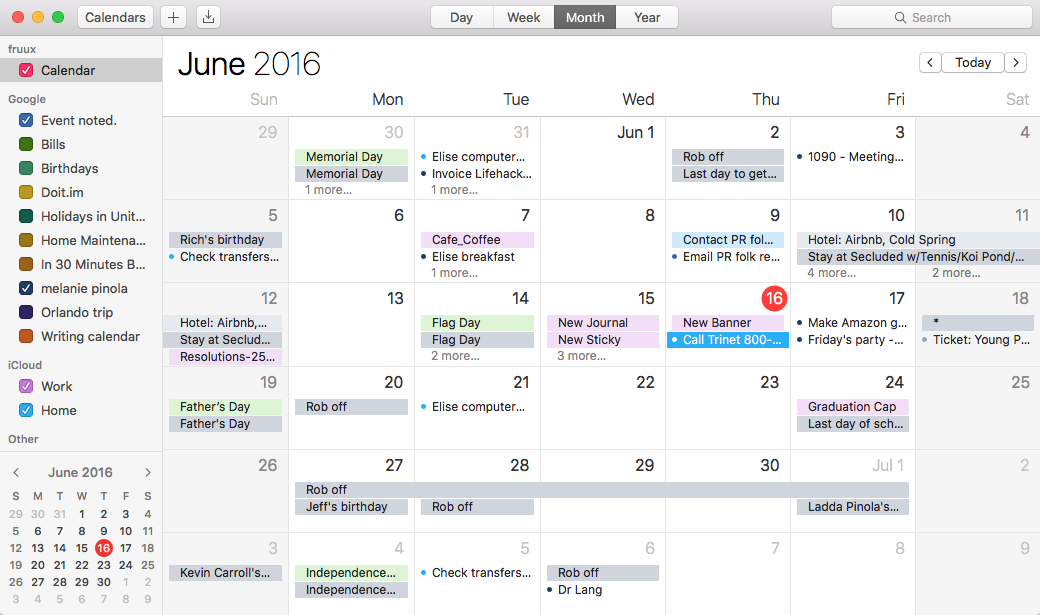GCalendar Dark: Google Calendar Destkop App with Dark Mode. Google Calendar Desktop application for Windows, Mac and Linux with Dark Theme. Packaged with Electron. Last Update 15/04. Observation: The app is not finished yet. There are some assets with wrong colors, missing functionalities and improvements. Google Calendar. The best calendar app for GSuite users & in-general use. Google Calendar is free.
Are you a Google Calendar Desktop Mac user? Do you want to use your google calendar on your mac desktop? Informant for macOS is a great way to accomplish that. We have answered a number of questions about setting up google calendar accounts with Informant for macOS. Here is a post that can help you with the best options.
(Download Informant for macOS)
Two options are presented here. It is important to note that you should not set up both of these options or you will end up with duplicate calendar entries.
Option 1:
Setup Your Google Calendar on your Mac
using Informant for macOS and Informant Sync Service
Step 1: Download & Install Informant for macOS
Step 2: Open Informant for macOS
Step 3: Setup Google Calendar Account within Informant
- Click Informant menu>>Add Sync Account…
- Click the “+” button on the bottom of the Account list
- Select Google Calendar
- Follow the setup Instructions in the app
Google Calendar App For Mac
Option 2:
Setup Your Google Calendar on your Mac
using Native Data Option
Informant for macOS can access your native Apple Calendar data on your Mac. If you need to see your Google Calendar data in both Apple Calendar and in Informant (or if, for instance, you want to use Apple Data Detectors for calendar data but still manage your calendar data inside Informant), then you can set up your Apple Calendar to sync with Google and then you can manage your Apple Calendar data from within Informant.
Step 1: Download & Install Informant for macOS
Step 2: Set up Apple Calendar to sync with your Google Calendar.
- On your Mac, click the Apple icon in top left corner and choose System Preferences
- Click the Internet Accounts option.
- On the left side of the Accounts tab, click Add or select Google
- Select Google Continue.
- To add your Google account information, follow the steps on the screen.
- On the Accounts tab, use “Refresh Calendars” to choose how often you want Apple Calendar and Google Calendar to sync.
Step 3: Open Informant
Step 4: Go to Preferences and make sure the option to “Include Calendar App Events” is checked
Likewise, you can set up Apple Calendar to sync to other services as well (like Exchange) and Informant can read/write that data as well.
Learn more about accessing Google Calendar on your mac desktop using Informant for macOS
Don’t have a google account? Get a Free Google Calendar account here:
Calendar User Guide
If you keep calendars in internet accounts—for example, iCloud, Yahoo, or another CalDAV account—you can use the accounts in Calendar on your Mac, and access all your calendars and events in one place.
Google Calendar Desktop App Mac
Add a calendar account
In the Calendar app on your Mac, choose Calendar > Add Account.
Do one of the following:
Select your calendar account provider, click Continue, then follow the onscreen instructions.
If your calendar account provider isn’t listed, ask your provider for the information you need to enter.
Choose Other CalDAV Account, click the Account Type pop-up menu, then choose an option based on the information you need to enter.
Automatic: Choose this option if you just need to enter your email address and password.
Manual: Choose this option if you need to enter your user name, password, and the server address.
Advanced: Choose this option if you need to enter your user name, password, server address, server path and port number. You can also select checkboxes if you need to use SSL or Kerberos v5 authentication.
Each account you add is listed separately in the sidebar. If the sidebar isn’t showing, choose View > Show Calendar List or click the Calendar List button in the toolbar.


Set up your iOS and iPadOS devices to use the same account, so that your calendars stay up to date across all those devices and your Apple Watch.
Stop using a calendar account
You can temporarily stop using an account so that its calendars and events no longer appear in Calendar on your Mac.
In the Calendar app on your Mac, choose Calendar > Accounts, then select the account you want to stop using.
Deselect the Calendar checkbox.
To use the account again in Calendar, select the Calendar checkbox. The account’s calendars and events reappear.
Delete a calendar account
If you no longer want to use an account in any app, including Calendar, you can delete the account.
Note: If you use iCloud Keychain, and you remove an account (other than your primary iCloud account), you’re asked whether to remove the account from your other Mac computers that use iCloud Keychain, or just turn off all the account features on this Mac.
In the Calendar app on your Mac, choose Calendar > Accounts, then select the account you want to delete.
Click the Remove button at the bottom of the account list.
You can view, add, and modify events, and respond to invitations, in the Calendar app on all your devices that use the same accounts. You can also view, add, and modify your iCloud calendar events, and respond to invitations, on iCloud.com. Changes you make show up everywhere, so you always have your most current calendar events at hand. Calendar notifications also appear on your Mac and other devices that use the same accounts.
If you use Handoff, you can switch between your Mac and other devices while creating, modifying, or viewing events and calendars. To open an event or calendar handed off to your Mac, click the Handoff Calendar icon that appears at the left side of the Dock.